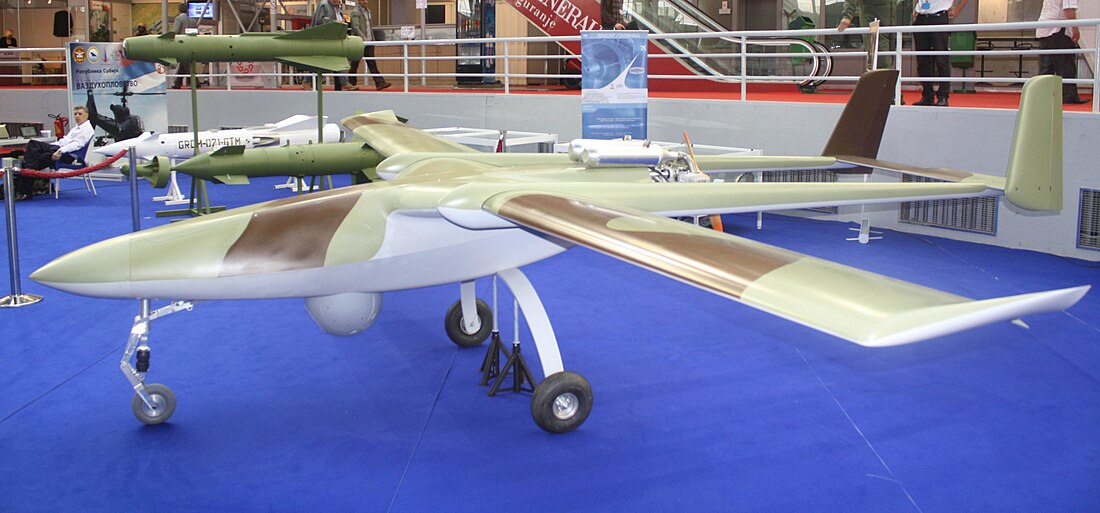The BPL Pegaz 011 is a tactical unmanned aerial vehicle prototype developed at the Military Engineering Institute, premiered at the 2011 Partner Arms Fair.

Specifications
Data from MTI Pegaz project page[1]
General characteristics
- Capacity: 50 kg (110 lb) payload
- Length: 5.395 m (17 ft 8 in)
- Wingspan: 7.025 m (23 ft 1 in)
- Height: 1.6 m (5 ft 3 in)
- Wing area: 4.24 m2 (45.6 sq ft)
- Empty weight: 120 kg (265 lb)
- Max takeoff weight: 245 kg (540 lb)
- Propellers: 2-bladed pusher propeller
Performance
- Maximum speed: 160–180 km/h (99–112 mph, 86–97 kn)
- Cruise speed: 130–150 km/h (81–93 mph, 70–81 kn)
- Range: 250 km (160 mi, 130 nmi) exact maximum range is yet unknown
- Endurance: 6-10+ hours
- Service ceiling: 6,000 m (20,000 ft)
Armament
- Rockets: 2x FT-8D laser guided rocket
Avionics
- Automatic takeoff from prepared runway (optional: catapult)
- Automatic landing on prepared runway (emergency: parachute)
- Fully autonomous way points tracking, holding, camera guiding Emergency and return home mode Altitude and velocity autopilot
Operators
See also
Aircraft of comparable role, configuration, and era
- High Speed Target Drone
- IAI Scout
- AAI RQ-2 Pioneer
- AAI RQ-7 Shadow
- IAI Searcher
- Tadiran Mastiff
- Bayraktar PT1
- SELEX Galileo Falco
- Watchkeeper WK450
- SAGEM Sperwer
References
External links
Wikiwand in your browser!
Seamless Wikipedia browsing. On steroids.
Every time you click a link to Wikipedia, Wiktionary or Wikiquote in your browser's search results, it will show the modern Wikiwand interface.
Wikiwand extension is a five stars, simple, with minimum permission required to keep your browsing private, safe and transparent.
